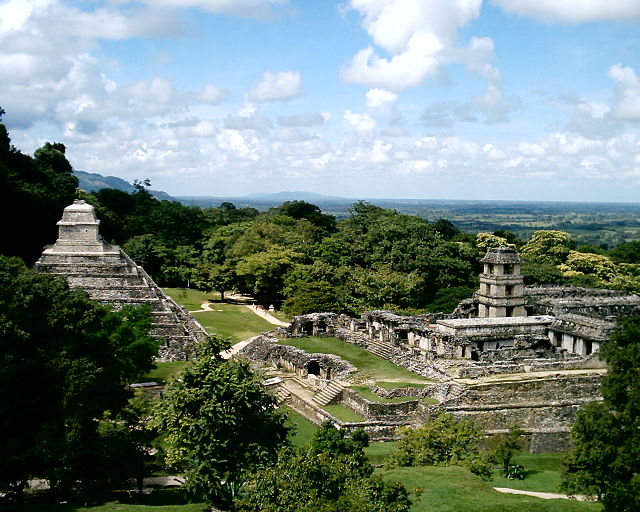The Mayan architecture of the Maya civilization spans across several thousands of years, several eras of political change, and architectural innovation before the Spanish colonization of the Americas. Often, the buildings most dramatic and easily recognizable as creations of the Maya peoples are the step pyramids of the Terminal Preclassic Maya period and beyond. Based in general Mesoamerican architectural traditions, the Maya utilized geometric proportions and intricate carving to build everything from simple houses to ornate temples. This article focuses on the more well-known pre-classic and classic examples of Maya architecture. The temples like the ones at Palenque, Tikal, and Uxmal represent a zenith of Maya art and architecture. Through the observation of numerous elements and stylistic distinctions, remnants of Maya architecture have become an important key to understanding their religious beliefs and culture as a whole.
Archaeological site at Palenque, Chiapas, Mexico
Temple of the Cross, Palenque
Remains of the Palace of Sayil, Yucatán
Tikal, temple pyramid with prominent roof comb
Tikal is the ruin of an ancient city, which was likely to have been called Yax Mutal, found in a rainforest in Guatemala. It is one of the largest archeological sites and urban centers of the pre-Columbian Maya civilization. It is located in the archeological region of the Petén Basin in what is now northern Guatemala. Situated in the department of El Petén, the site is part of Guatemala's Tikal National Park and in 1979 it was declared a UNESCO World Heritage Site.
Tikal Temple I rises 47 meters (154 ft) high.
The great metropolis of Teotihuacan in the Valley of Mexico appears to have decisively intervened in Tikal politics.
The main plaza during winter solstice celebrations
The site core seen from the south, with Temple I at center, the North Acropolis to the left and Central Acropolis to the right








